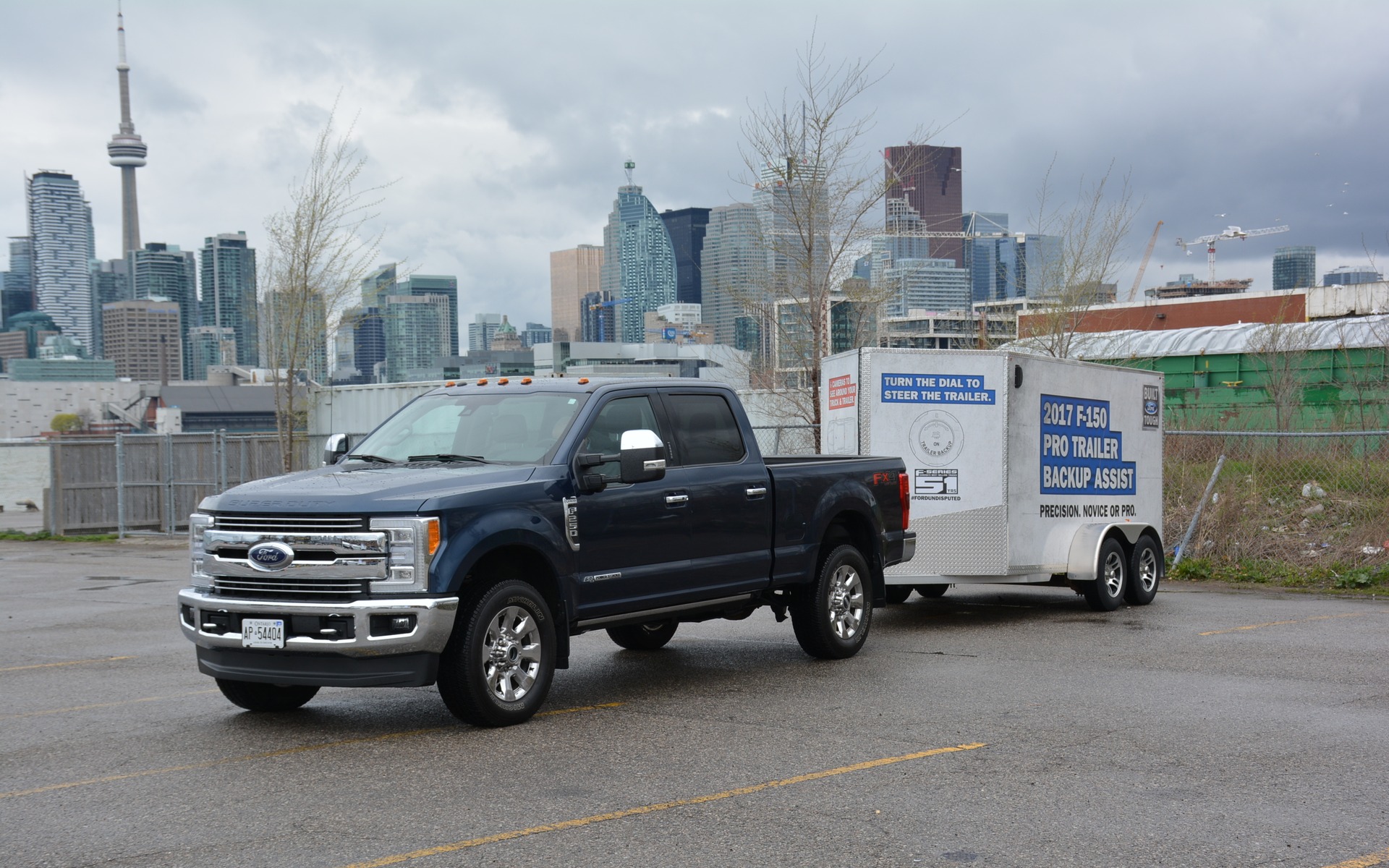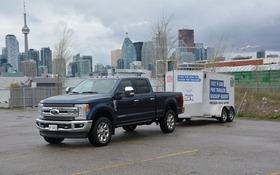All-new 2017 Ford Super Duty gets techy with it
For a half-century, Ford has dominated the pickup truck segment, especially when you divide General Motors divisions of Chevrolet and GMC. Recently, stiff competition from Ram and the General Motors' twins has created an arm's race to build the most powerful, lightest, comfortable and technologically-sound pickup truck to the benefit of the consumer.
Ford, coming off a strong month of April Canadian sales—its best April since 1989 with 30,401 vehicles sold (14,326 units coming from the Ford F-Series)—isn't taking its foot off the pedal. The Blue Oval is placing more attention towards its tried and true F-Series products, and that’s why they stand out from the pack.
The Ford rhetoric for its truck division typically focuses on its best-in-class towing, payload and gas-engine torque figures. And we can't forget about its high-strength, military-grade aluminum alloy bodies. At a local Ford F-Series event, those key attributes were mentioned, but the focus was on its class-exclusive technology.
In total, there's currently 15 class-exclusive technologies offered in the all-new 2017 Ford F-Series Super Duty (F-250, F-350 and upwards) – its first full makeover in 18 years. Not all will appeal to the average consumer; however Ford has a few practical technology features for regular trailer haulers that might eventually become staples within the industry.
Trailer Reverse Guidance
Ford is calling its new Super Duty the “Ultimate Tow Machine,” and that's due in large part to its Trailer Reverse Guidance system.
I will be the first to point out that I'm no trucking expert. I have never owned a truck, nor do I have much experience in towing or hauling; heck, I don't even take out a lot of trucks for reviews. Essentially, I'm the perfect person to test out these new technology guidance packages, and see how well it can assist the driver.
Using the updated SYNC 3 infotainment unit, there are a total of seven cameras at your disposal, three of those being of high resolution used for trailer guidance. Therefore, before any motion, all blind spots are now in vision including inside the box, its connection to the trailer, what's behind the trailer and in front of the truck, as well as the sides of the truck, box and trailer. It can be overwhelming, but after a few practice sessions, the system is easy to understand, and most importantly quick to respond to user inputs.
However, this system isn't all about blind spots – it acts as a coaching instructor throughout the process. When in reverse, the Super Duty displayed the exact angle in which the trailer would be positioned based on steering inputs, allowing adjustments to be made as I attempted to park the truck and trailer into an actual parking spot.
For newbies, it's very easy for the truck to jackknife, as steering works in the opposite direction, quickly making the world around you seem to not make sense. Jackknifing happens, and it happened to me on my first attempt. To counteract getting in that position, the Super Duty showcases a colour-coded jackknife warning dial to let you know what's happening behind.
Naturally, an owner of a truck knows what they're doing, but who would say no to added guidance? Reversing is never easy and it can take several attempts to achieve, and that's with the ever-present potential to hit something or do body damage.
Another feature that eases some stress is Ford's patent-pending straight-line backup guidance. This may seem like a simple task, but with a trailer in tow, nothing comes without complication. As you reverse, the infotainment screen will tell you to apply subtle steering inputs to keep the truck and the trailer consistently in a straight position.
BLIS with Trailer Tow
Blind Spot detection is a key luxury used by many consumers. It can be a helpful tool, but what about when a trailer is hooked up? Ford is the first automotive manufacturer to incorporate its own blind spot monitoring system for the Super Duty segment, and it's available in every one of its 2017 Ford F-Series vehicles.
Available in various packages, BLIS (Blind Spot Information System) with Trailer Tow can detect vehicles in your blind spots from radar sensors placed in its taillamps. The system is optimized to include the length of the trailer, up to 33 feet long, and one can set that up through the various trailer setup screens in the eight-inch gauge cluster.
A few demonstrations were conducted, and on each occasion, the SUV running beside my trailer was picked up as a yellow light appeared in my side mirror. Once the Super Duty is no longer towing, BLIS detects that and reverts back to a simple blind spot monitoring system for the truck alone.












